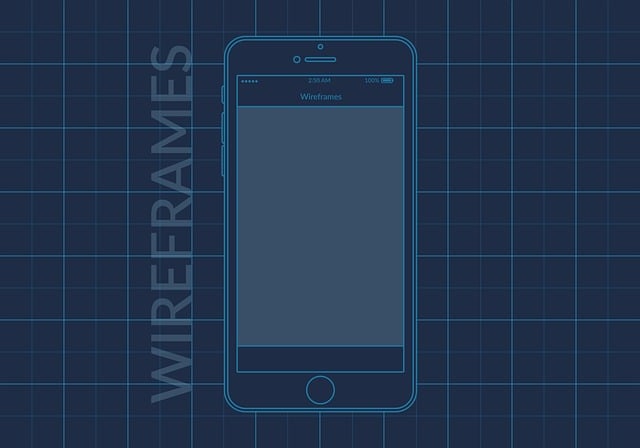In today's digital world, users access websites from diverse devices, requiring flexible designs. Responsive Web Design (RWD) solves this by allowing sites to adapt seamlessly to various screen sizes and resolutions, improving user experience, engagement, and satisfaction. This approach uses media queries, flexible grids, and content optimization to ensure legibility, navigation, and accessibility across all devices, ultimately driving conversions and SEO rankings. Prioritizing user experience (UX) through RWD creates inclusive, usable websites for all visitors on any device.
In today’s digital landscape, users access websites across a multitude of devices—from desktops to tablets to smartphones. Understanding this cross-device usage is crucial for modern web design. This article explores the challenges posed by traditional web design in a multi-device world and delves into the key principles of Responsive Web Design (RWD). We’ll navigate strategies for adapting content to different screen sizes, orientations, and load times, while emphasizing user experience consistency and accessibility.
Understanding Cross-Device Usage: The Current Landscape

In today’s digital age, users access the internet from a myriad of devices, from desktops and laptops to tablets and smartphones. Understanding this diverse user base is crucial for effective website design. The current landscape of cross-device usage presents both challenges and opportunities for web designers and developers. With a significant portion of internet traffic now originating from mobile devices, implementing responsive web design has become an industry standard.
Responsive Web Design (RWD) ensures that websites seamlessly adapt to different screen sizes and resolutions, providing an optimal viewing experience regardless of the device used. This approach not only caters to users’ preferences but also enhances user engagement and satisfaction. By prioritizing RWD, businesses can ensure their online presence is accessible, usable, and visually appealing across a wide range of devices, thereby increasing the chances of converting visitors into customers.
Challenges in Traditional Web Design for Multiple Devices

In the traditional web design approach, creating a website that caters to multiple devices presents several challenges. With the diverse range of screen sizes, resolutions, and operating systems available today, developers often struggle to provide an optimal user experience across all platforms. A fixed-layout website designed for a desktop monitor might not translate well to a smartphone or tablet, leading to either a poor display or excessive scrolling. This issue has prompted the industry to shift towards more adaptive solutions, emphasizing Responsive Web Design (RWD) as a necessity rather than a luxury.
RWD offers a flexible layout that adjusts seamlessly based on the device’s screen size and orientation, ensuring content remains readable and accessible. Unlike traditional methods that require separate designs for each device type, responsive design employs media queries and flexible grid systems to dynamically reshape elements, images, and text for optimal rendering. This not only streamlines the development process but also enhances user satisfaction by delivering a consistent experience across desktops, tablets, and smartphones.
Key Principles of Responsive Web Design (RWD)

The cornerstone of successful cross-device website design is Responsive Web Design (RWD), which ensures a seamless user experience across various devices and screen sizes. Key principles of RWD include using flexible layouts that adapt to different screens, employing media queries to adjust styling based on device capabilities, and optimizing content for legibility and interactivity on any platform. This approach not only enhances accessibility but also improves search engine rankings by providing a singular, optimized experience for all users, regardless of whether they’re accessing the site via smartphone, tablet, or desktop computer.
Moreover, RWD prioritizes mobile-first design, acknowledging that an increasing number of internet users primarily engage with websites on their smartphones. By structuring content and functionality to prioritize mobile viewing, web developers can ensure that essential information loads quickly, ensuring user satisfaction and encouraging longer visits. This strategy also facilitates easier maintenance and updates as the design language becomes more consistent across all devices.
Designing for Different Screen Sizes and Orientations

In today’s digital landscape, users access websites from a multitude of devices – desktops, tablets, and smartphones, each with distinct screen sizes and orientations. Effective cross-device website design necessitates a responsive web design approach. This means creating sites that dynamically adapt to varying screen dimensions, ensuring optimal viewing experiences regardless of the device used. Responsive Web Design (RWD) employs flexible layouts, images, and CSS media queries to adjust content placement and presentation.
By implementing RWD principles, designers can ensure that text remains legible, navigation stays intuitive, and multimedia elements display correctly across different platforms. This adaptability not only caters to diverse user preferences but also boosts website accessibility and search engine optimisation (SEO) rankings. Ultimately, a well-executed responsive design fosters higher user engagement and satisfaction, solidifying the site’s presence in the competitive online arena.
Flexibility and Adaptability: CSS Media Queries

In the realm of cross-device website design, achieving a seamless user experience across various screens and platforms is paramount. CSS Media Queries stand as a cornerstone of this endeavor, offering unparalleled flexibility and adaptability for responsive web design. By allowing developers to apply unique styles based on device characteristics like screen size, orientation, and resolution, media queries ensure that websites gracefully adjust, providing an optimal viewing experience regardless of the device in use.
This powerful feature enables designers to create fluid layouts, where content rearranges itself intuitively, from desktops to tablets to smartphones. As a result, users benefit from intuitive navigation, easily consumable content, and minimal scrolling or resizing, all hallmarks of a well-executed responsive web design strategy.
Optimizing Content Delivery for Faster Load Times

In the realm of cross-device website design, optimizing content delivery for faster load times is paramount. Responsive Web Design (RWD) plays a crucial role here by ensuring that web pages adapt seamlessly to various screen sizes and devices, be it smartphones, tablets, or desktops. This adaptability not only enhances user experience but also directly impacts load times. By employing techniques like lazy loading, minimizing HTTP requests, compressing images, and leveraging browser caching, developers can significantly reduce the time it takes for a website to display fully.
These optimizations are vital as users increasingly access websites on smaller screens, expecting instant responses. Faster load times not only satisfy user expectations but also contribute to lower bounce rates and higher engagement levels. In today’s digital era, where attention spans are limited, ensuring your website delivers content swiftly can be a game-changer in fostering a positive, inclusive online experience for all users across diverse devices.
User Experience Considerations: Consistency and Accessibility

In creating a cross-device website, user experience (UX) considerations are paramount. One of the key aspects is ensuring consistency across various screen sizes and devices. A responsive web design approach is essential to achieving this, where the layout adapts seamlessly to different displays, be it a smartphone, tablet, or desktop computer. This uniformity in appearance and functionality helps users navigate effortlessly, promoting a seamless experience regardless of their preferred device.
Accessibility is another critical element within UX. Responsive design should cater to users with disabilities, incorporating features like flexible text sizes, clear contrast, and keyboard navigation. By adhering to accessibility guidelines, such as WCAG (Web Content Accessibility Guidelines), developers can create websites that are inclusive and usable by all, enhancing the overall user experience for a diverse range of visitors.
Tools and Best Practices for Implementing RWD

Implementing Responsive Web Design (RWD) requires the right tools and best practices for optimal cross-device performance. Start by utilizing CSS media queries, which allow for dynamic style adjustments based on screen size and orientation. Frameworks like Bootstrap or Tailwind CSS provide pre-built responsive components and layouts, significantly streamlining development time and ensuring consistency across devices.
Additionally, image optimization techniques such as lazy loading and using webp formats help reduce load times while maintaining visual quality. Regularly test your website on various devices and emulators to catch any layout issues early in the design process. This iterative approach ensures a seamless user experience, no matter the device being used.
